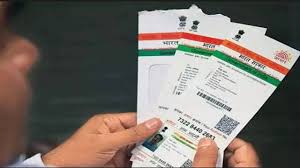Understanding Aadhaar Card: Importance and Recent Developments

Introduction
The Aadhaar card has emerged as a pivotal identity document in India since its inception in 2009. Issued by the Unique Identification Authority of India (UIDAI), the Aadhaar card establishes a unique identity for residents in the country through biometric data such as fingerprints and iris scans. With over 1.3 billion Aadhaar cards issued, its relevance continues to grow, impacting various sectors including welfare, banking, and telecommunications.
Recent Developments
In recent news, the Government of India has taken significant steps to enhance the functionality and security of the Aadhaar system. In September 2023, the UIDAI announced the introduction of a new feature allowing users to update their mobile numbers linked to their Aadhaar without the need for any physical documentation. This is aimed at making the process more user-friendly and accessible, especially for those in remote areas.
Moreover, the Supreme Court of India has reiterated the legal framework around the Aadhaar card, emphasizing its compulsory use for direct benefit transfers while ensuring that citizens’ privacy is respected and safeguarded. This balance between effective governance and individual rights has reignited discussions on the ethical implications of biometric identification systems.
Impact on Various Sectors
The Aadhaar card has transformed the landscape of various services. In the banking sector, it has streamlined Know Your Customer (KYC) processes, allowing for instant account verification. Similarly, in social welfare programs, linking benefits to Aadhaar has reduced leakages, ensuring that subsidies reach the intended beneficiaries.
Telecommunication companies have also embraced Aadhaar authentication for new mobile connections, simplifying the user onboarding process and enhancing security measures against fraud. As digital services expand, the role of Aadhaar in e-governance continues to grow, making it easier for citizens to access government services online.
Conclusion
As the Aadhaar card evolves, it will remain a critical tool in India’s drive towards a digital economy and efficient service delivery. While its benefits are manifold, continuous dialogue around privacy and data security is essential. With anticipated technological advancements and regulatory frameworks, Aadhaar could facilitate even greater integration into everyday life. As the government looks to employ Aadhaar in additional applications, ensuring transparency and safeguarding citizens’ rights will be paramount.









